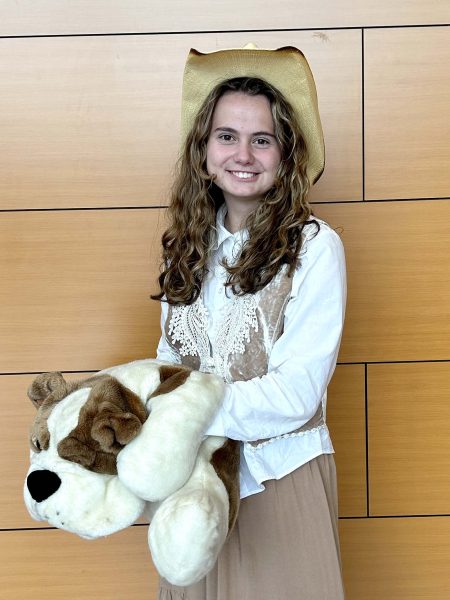“House of the Dragon” and “Rings of Power” pull audiences back into their universes
Art by Maggie Baker
September 20, 2022
When prequels of the most renowned fantasy franchises unexpectedly coordinate their release dates, it’s difficult not to compare them. Within both shows are the same majestic creatures and realms. While the originals, “Game of Thrones” and “Lord of the Rings”, lacked compelling dialogue towards the end of their sagas, “House of the Dragon” and “Rings of Power” compensated for the misstep with its effortless conversations formed from dynamic relationships.
“House of the Dragon” follows in the steps of “Game of Thrones”, an HBO hit which ran for eight seasons and was a cultural landmark; it paved the way for the fantasy genre to become respected in mainstream TV shows. The magnified gore and political tensions within “House of the Dragon” replicate the same setting of “Game of Thrones.” Set 172 years before the events of the original, princess Rhaenyra Targaryen struggles to establish herself as heir to the throne of the Targaryen House, in charge of ruling the Seven Kingdoms. Disapproval towards Rhaenyra from citizens and royals stems from the realm’s patriarchal ideals, and the conflicting views of the throne’s succession expand the complexity of the characters.
The mind games within “House of the Dragon” differ greatly from the overall plot of “Rings of Power,” which focuses more on the adventurous side of fantasy. Influenced by the numerous different works of J.R.R. Tolkein, the show uses mountains, caves, and sea expeditions across Middle Earth to establish world-building with its portrayal of different societies. Rather than one main plotline, the show follows several: Arondir longs for a complicated romance, Norie desires adventure, the Dwarves establish a building proposal from the Elves, and Galadriel hopes to avenge her dead brother.
Most of the subplots’ conflicts in “Rings of Power” center around a common enemy: Morgoth’s successor, Ardar, and his army of Orcs. The antagonist is clear in the performance, with a distinct line between good and evil; good protects innocents, evil kills innocents.
“House of the Dragon” takes a different spin with its archetypes; they have no distinct antagonist. Instead, morally gray characters are used to initiate dischord, and with the plot centered around royal elites battling for political self-interests, it’s understandable.
The budget of “Rings of Power” was much greater than “House of the Dragon,” costing about $1 billion for the first season, and they put it to good use. J.A. Bayona exhibits the mythical setting of the show, with both wide and birds-eye shots, and the additional intensive action shots hook the audience into the universe. and both put it to good use.
Even with the lesser budget of $20 million per episode, Miguel Sapochnik’s use of dark lighting schemes sets the tone of each episode. He perfectly incorporates the unique language and culture of the Valyria into each character’s mannerism.
Sadly, the appreciation for the characters and action in “Rings of Power ” doesn’t form immediately. The premier episode felt slow; the drama was basic and a little cliche. The viewer is fully immersed in the show in later episodes as the pacing quickens, the drama intensifies, and the characters become less irritating.
Compared to the slow buildup in “Rings of Power,”“House of the Dragon” is a hit from the start. The first episode displayed the desperation for a male heir to the throne, and though it’s not an extremely innovative conflict, the measures taken to produce the heir were grotesque and unexpected. You can’t help but continue watching to see what other extremities the Targaryens will try next.
Both shows appeal to different audiences. Families would be more prone to watching “Rings of Power” with its simple adventure and less gruesome effects, while people looking for something more gritty would veer towards “House of the Dragon.” Pedestaling one show above the other would only take into account the perspective of one audience. Even if you have a preference, the shows are equally well-written and perfectly encapsulate the old majestic feel of fantasy into their cinematography and language.




